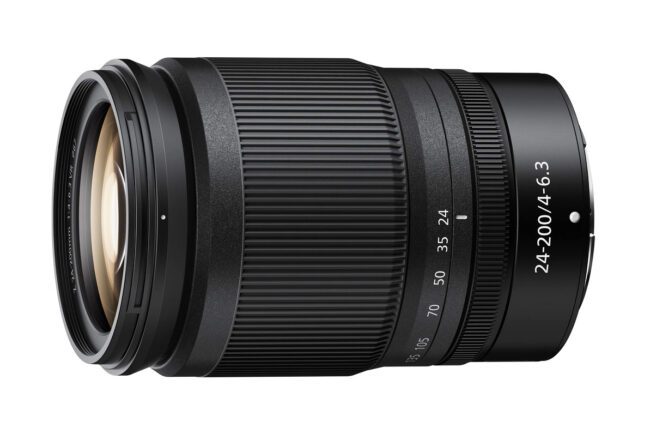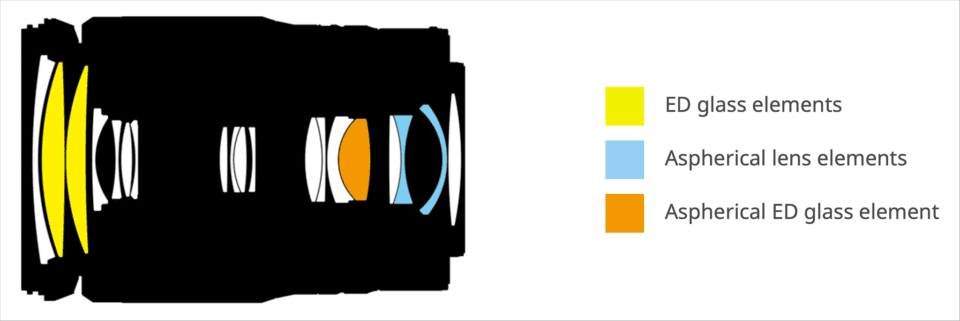A lightweight, do-it-all lens for Nikon Z cameras, with fewer compromises than a typical superzoom.
The word “superzoom” doesn’t always conjure pleasant images in a photographer’s mind. Historically, a lot of superzooms are low-end lenses with bad image quality and even worse construction. The $900 Nikon Z 24-200mm f/4-6.3 VR aims to change that impression. Does it succeed?
It’s complicated. While the Z 24-200mm f/4-6.3 is in most ways the best superzoom we’ve ever tested, it’s still a superzoom. When you choose this lens, you’re sacrificing some sharpness and light-gathering capabilities in exchange for less weight and more convenience.

Weight and convenience are nothing to laugh at, though. Considering that we’re talking about a lightweight mirrorless system in the first place, a lot of photographers who shoot with Nikon Z cameras are trying to avoid heavy gear. Travel photographers, hikers, and so on – not to mention people photographing their family or just wanting to carry a camera around on the go – are all photographers who could benefit from a superzoom like this.
Even if none of that applies to you, the 24-200mm f/4-6.3 still fills an important gap in Nikon’s current full-frame (FX) Z lens lineup at the moment: the missing lightweight telephoto zoom. Since the Z6 and Z7 were first announced in 2018, tons of photographers have asked Nikon for a Z-series 70-200mm f/4 or 70-300mm f/4-6.3 to get high quality telephoto shots without weighing down their bag. Such lenses would perfectly complement the high-quality 14-30mm f/4 and 24-70mm f/4 zooms that Nikon has released so far. Unfortunately, neither a 70-200mm f/4 nor a 70-300mm f/4-6.3 has been announced yet, and the Z lens roadmap doesn’t indicate that we’ll see one for at least another year.
But if this 24-200mm lens is good enough, why can’t it serve the same purpose? It’s extremely light at 570 grams (1.25 lbs), which is even less than the Nikon F 70-300mm f/4.5-5.6 (at 680 grams / 1.50 lbs). In fact, the 24-200mm is the lightest telephoto zoom in Nikon’s entire FX lineup at the moment, whether DSLR or mirrorless. Maybe this is the missing lightweight telephoto we’ve been waiting for all along, and it just slipped under our noses undetected.

But that’s only true if it’s a good lens – at a minimum, better than a typical superzoom. Light weight is always welcome, but it’s rarely worth buying a soft or cheaply-made lens just to save a few ounces.
That’s why it was pretty surprising of Nikon to release this lens sooner than any other lightweight telephoto zoom for their full-frame Z system. They clearly have confidence in its image quality and other factors like build quality and autofocus. Is that confidence well-placed? Now that we’ve tested the 24-200mm f/4-6.3 extensively at Photography Life, we’ll share our answer to that question throughout this review.

First, let’s take a step back and look at the specifications of the Nikon Z 24-200mm f/4-6.3.
Nikon Z 24-200mm f/4-6.3 VR Specifications
- Mount Type: Nikon Z Mount
- Focal Length: 24 to 200mm zoom (8.3× zoom)
- Angle of View (DX): 61° to 8°
- Angle of View (FX): 84° to 12° 20′
- Maximum Aperture: f/4 at 24mm; f/6.3 at 85mm and beyond
- Minimum Aperture: f/22 at 24mm; f/36 at 70mm and beyond
- Aperture Blades: 7, rounded
- Filter Size: 67mm
- Lens Elements: 19
- Lens Groups: 15
- Special Elements: 5 total: 2 ED glass, 2 aspherical, and 1 dual ED + aspherical
- ARNEO Coating: Yes
- Super Integrated Coating: Yes
- Fluorine Coated Front Element: Yes
- Electronic Diaphragm: Yes
- Vibration Reduction: Yes
- Internal Focusing: Yes
- Internal Zooming: No
- Focus Motor: STM Stepping Motor
- Minimum Focus Distance: 0.50 meters (19.7 inches) at 24mm; 0.70 meters (27.6 inches) at 200mm
- Maximum Magnification: 0.28× (1:3.57) at 200mm
- Mount Material: Metal
- Weather/Dust Sealing: Yes
- Packed Dimensions (Length × Diameter): 114 × 76.5 mm (4.49 × 3.01 inches)
- Length at 200mm: 175 mm (6.87 inches)
- Weight: 570 g (1.25 lbs)
- MSRP: $900
- Lowest Sale Seen: $800 (check current price)
What strikes me about these specifications is that Nikon really pulled all the stops considering this isn’t an “S-series” lens – i.e., supposedly not one of their pro-level lenses. The 24-200mm has all of Nikon’s top coatings, plus two ED glass elements, 2 aspherical elements, and a dual aspherical and ED glass element. It has weather sealing and a metal lens mount. I’m left thinking that the only reason Nikon didn’t add this to the S lineup is the maximum aperture of f/4-6.3, which is more befitting of an entry-level lens. (The other possibility is that Nikon is making a comment about the lens’s image quality. We’ll get back to that later.) Otherwise, the 24-200mm shares basically all the same characteristics as S-series lenses like the Nikon 14-30mm f/4 and 24-70mm f/4.
Here’s Nikon’s lens construction diagram for the 24-200mm f/4-6.3:

That’s a lot of lens elements. Nineteen, to be exact. It’s not out of line for a superzoom, but it’s still more than the Nikon Z 24-70mm f/2.8 S (17 elements) and behind only the Z 70-200mm f/2.8 S (21 elements) of the Z lenses so far.
Nikon certainly isn’t shying away from designs these days that make the most of their flexible Z mount. Take a look at the rear lens element in the diagram above. It’s almost popping out of the lens! Because Nikon Z cameras have a very short flange distance (only 16mm between the camera sensor and the lens mount), the rear element of the 24-200mm f/4-6.3 ends up being less than 20 millimeters / 0.8 inches away from the camera sensor. That simply wouldn’t be possible on a DSLR, where the rear element would bump into the mirror at such a short distance.
Beyond that, most of the 24-200mm f/4-6.3’s specifications are within expectations. It has a good maximum magnification of 1:3.57 for close-up photography, though dedicated macro photographers will prefer something like the Nikon Z 105mm f/2.8 macro. It’s priced about where it should be at $900, with sales sometimes bringing it down to $800. And, as I mentioned before, it’s very light: just 570 grams / 1.25 pounds. Not bad on Nikon’s part.
The maximum aperture values drop down a bit sooner than on some superzooms, but it’s still within expectations. Here are the maximum aperture values at common focal lengths as you zoom in:
- 24mm: f/4.0
- 28mm: f/4.5
- 35mm: f/4.8
- 50mm: f/5.6
- 70mm: f/6.0
- 85mm and beyond: f/6.3

The next page of this review dives into the 24-200mm f/4-6.3’s construction and real-world use in more detail. So, click below to go to the next chapter, “Build quality and handling.”